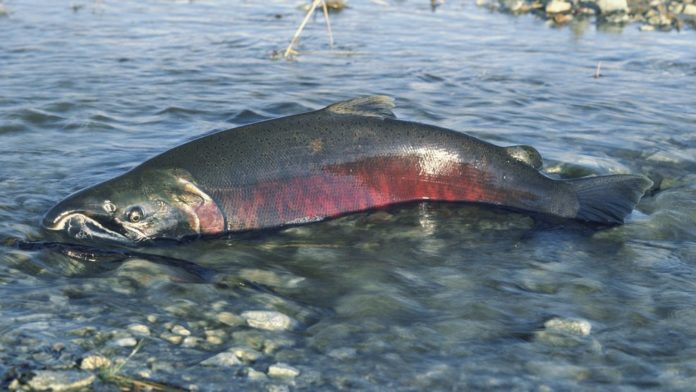Chinook salmon, also known as the “kings” of the west coast, have largely disappeared. Canadian and American researchers studied populations over the course of four decades, covering thousands of coastline kilometres, and confirmed what anecdotal reports have been claiming for years.
Populations from California to western Alaska were studied to assess population decline and changes in average size and age. Although all population groups had declined, fish off Alaska and Washington’s shores were hit hardest.
The Alaskan government took dramatic action last year by issuing an emergency order to close all chinook salmon fisheries after an extremely low count. Despite returns as low as 27% in some rivers, Fisheries and Oceans Canada did not follow suit – a decision for which they have been criticized.
Fisheries can be detrimental to fish species in more ways than just lowering numbers through their harvest. The selective nature of industrial fishing means that striking imbalances can manifest and devastate regional fish populations. Things like the average age, size, sex ratio, and genetic diversity are commonly affected.
Suspicion of an unknown but universal influence
The authors believe that such widespread changes suggest a more powerful cause beyond that of industry, sport fishing, and predation, although these are still important factors.
This is supported by the varying behaviour of regional groups with regards to migration. Some travel enormous distances to feed while others stay in the same area for most of their life (such as Californian chinook salmon), yet all have been affected.
“This suggests that there is something about the larger ocean environment that is driving these patterns,” says Jan Ohlberger, University of Washington. “I think fishing is part of the story, but it’s definitely not sufficient to explain all of the patterns we see. Many populations are exploited at lower rates than they were 20 to 30 years ago.”
Climate change is noted as a suspect given such a transcendental influence, but further research is needed to uncover a concrete link.
Chinook salmon’s “king” moniker relates to their famously large size, and this attribute lends them great value in the eyes of fishers and predators. Forty inches or more was not an uncommon size once upon a time, but things have changed.
The study found a reduction in average body size of up 10% in all chinook salmon population groups across the west coast. The decline in size is detrimental to overall population numbers because smaller females carry fewer eggs, leading to fewer spawn making it to adulthood.
Predation still poses a serious threat
Chinook salmon are anadromous in nature. They begin life in freshwater streams before migrating to the oceans where they spend between one and five years feeding and growing to their astounding size. As their life cycle ends, they venture back to their home streams and rivers, spawn, and die.
During the years spent in the ocean, killer whales are one of their main predators. Killer whales have a natural preference for larger prey and their migration route extends across the west coast of North America, so no regional group of chinook salmon can escape their reach.
Alaska has seen rapid population growth of killer whales in recent years, and the authors note this is likely a significant factor in this region’s especially poor chinook salmon numbers.
“We know that resident killer whales have a very strong preference for eating the largest fish, and this selectivity is far greater than fisheries ever were,” said senior author Daniel Schindler, University of Washington.
Chinook salmon are a popular meal with many other ocean dwellers besides killer whales, but knowledge of the total predation impact is poor and in need of further research.
“When you have predators and prey interacting in a real ecosystem, everything can’t flourish all the time,” Schindler said. “These observations challenge our thinking about what we expect the structure and composition of our ecosystems to be.”








































